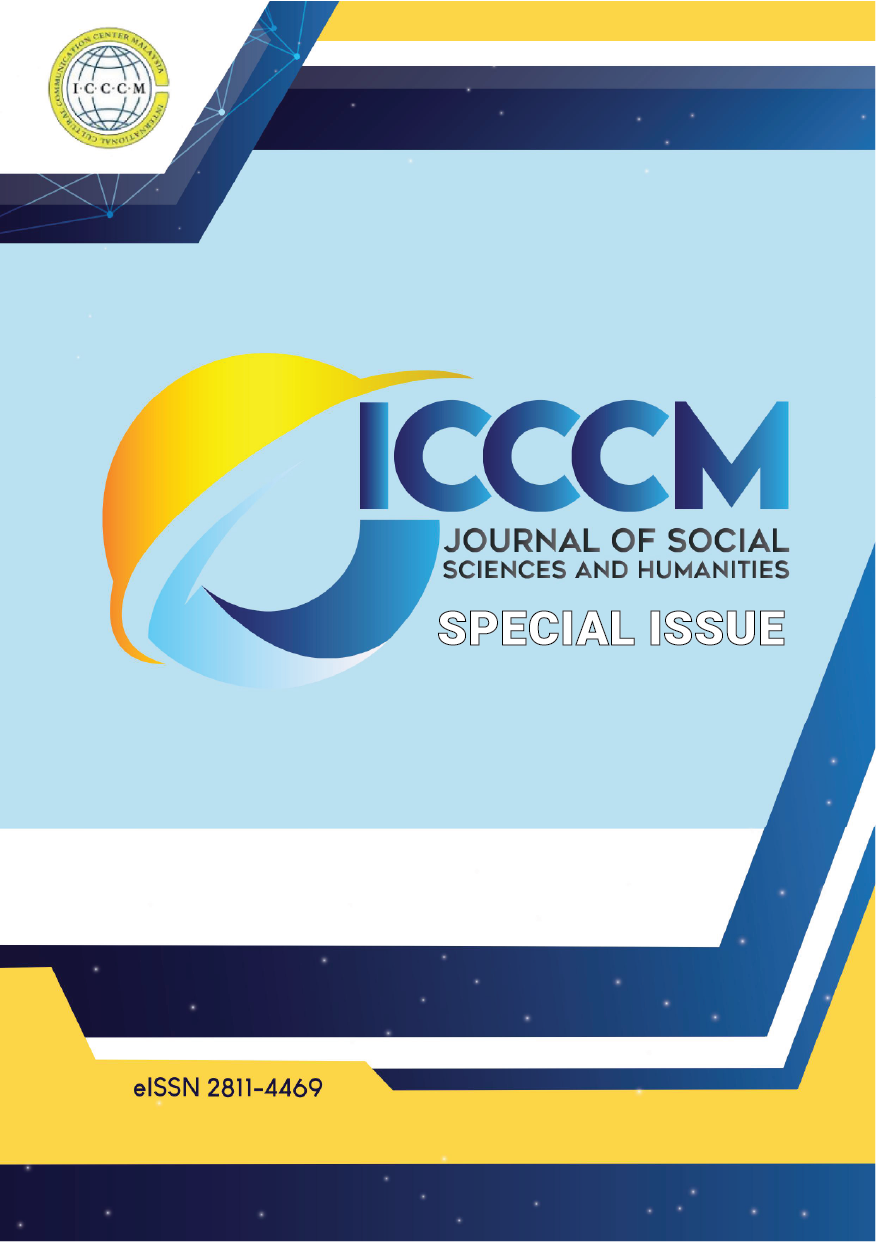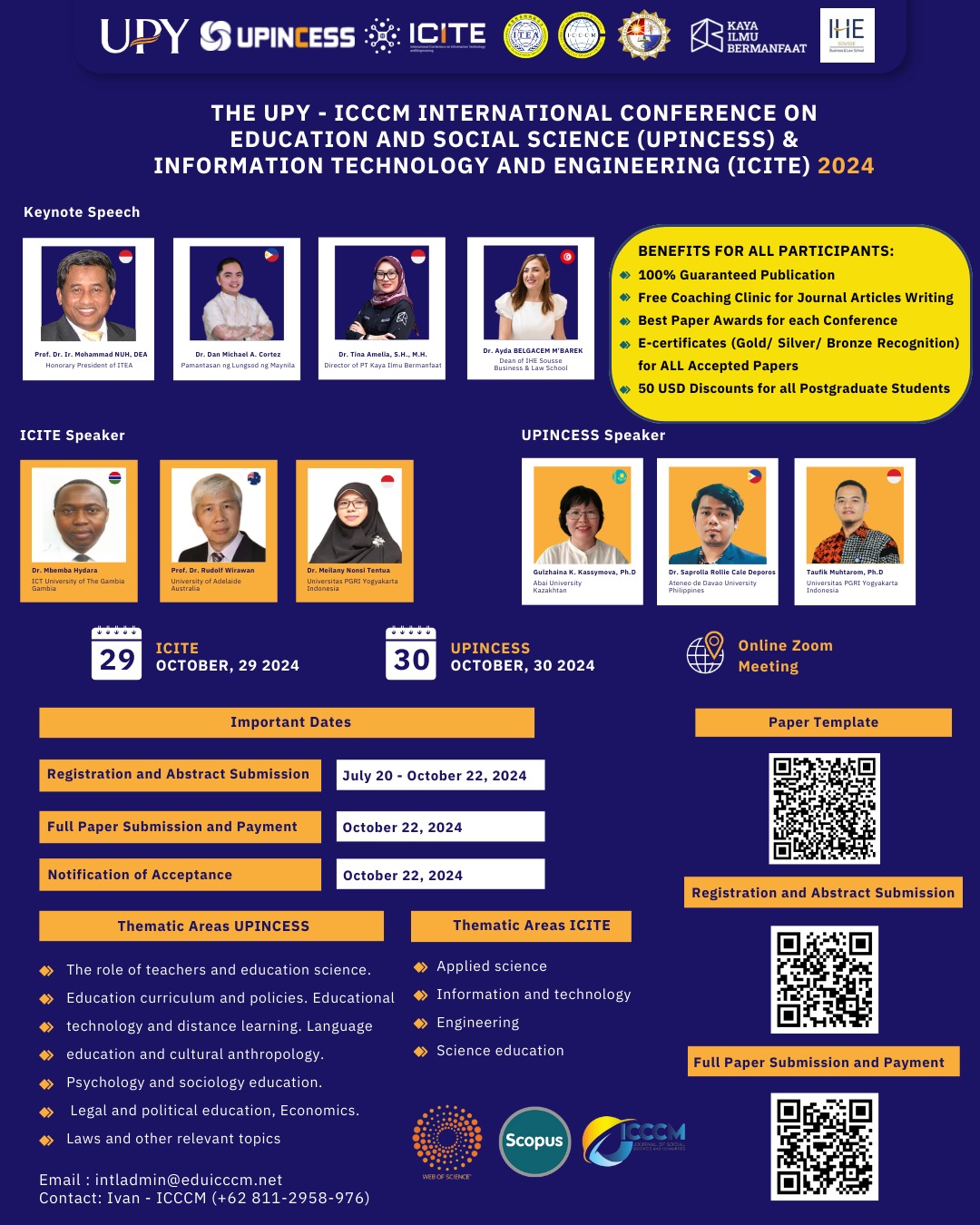Tradition of Ashura Porridge 10 Muharram in Kayu Bawang Village, Hulu Sungai Tengah Regency
DOI:
https://doi.org/10.53797/icccmjssh.v4.sp.37.2025Keywords:
10 muharram, porridge ashuraAbstract
This research is entitled 'The Tradition of Ashura Porridge 10 Muharram in Kayu Bawang Village, Hulu Sungai Tengah Regency'. The people of Kayu Bawang Village include people who interpret the month of Muharram as a noble and special month by carrying out religious traditions, namely cooking Ashura Porridge as a form of gratitude to Allah SWT, and commemorating the death of the granddaughter of the Prophet Muhammad PBUH, Saidina Husein. The purpose of this study is to describe the history and meaning of the As yura Porridge tradition, the process of making asyura porridge and analyze the challenges faced and how the efforts are being implemented in Hulu Sungai Tengah district. The method used is the Qualitative Research method, data is collected through observation and interviews. The results of the research show that the people of Kayu Bawang Village, Hulu Sungai Tengah Regency carry out the tradition of Ashura Porridge every 10 Muharam. The community cooks Bubur Ashura together in mutual cooperation. The process of cooking Ashura Porridge is carried out by women, using a large iron pot that takes approximately three hours. Ashura Porridge for the people of Kayu Bawang Village as a link for friendship, which can build cohesiveness, social concern and a sense of mutual cooperation among fellow communities. Meanwhile, efforts are made to preserve this tradition by introducing Ashura Porridge to the community, especially the millennial generation through technology media and continuing to carry out it regularly every year, so that this tradition is still known so that it can continue to be preserved by the next generation.
Downloads
References
Amaliyah, M., Fikri, F., Safitri, A., Rosnilam, R., Cahyani, W., Fatmasari, N., ... & Lestari, A. (2023). Pembuatan Bubur Asyura Dalam Rangka 10 Muharram di Desa Sungai Paring. Jurnal Pengabdian kepada Masyarakat Nusantara, 4(4), 3751-3756. https://ejournal.sisfokomtek.org/index.php/jpkm/article/view/1882
Anisah, M., & Hafidzi, A. (2025). Analisis Hukum Islam Terhadap Tradisi Membuat Bubur Asyura Masyarakat Banjar. Indonesian Journal of Islamic Jurisprudence, Economic and Legal Theory, 3(1), 424-437. https://doi.org/10.62976/ijijel.v3i1.946
Carter, S., & Henderson, L. (2005). Approaches to qualitative data collection in social science. Handbook of health research methods: Investigation, measurement and analysis, 1, 215-230.
Eppich, W. J., Gormley, G. J., & Teunissen, P. W. (2019). In-depth interviews. In Healthcare simulation research: A practical guide (pp. 85-91). Cham: Springer International Publishing. https://doi.org/10.1007/978-3-030-26837-4_12
Fahrudi, E., & Alfadhilah, J. (2022). Makna Simbolik “Bulan Suro” Kenduri Dan Selamatan dalam Tradisi Islam Jawa. ASWALALITA: Journal of Da'wah Management, 1(2), 185-195.
Furidha, B. W. (2023). Comprehension of the descriptive qualitative research method: A critical assessment of the literature. Acitya Wisesa: Journal Of Multidisciplinary Research, 1-8. https://doi.org/10.56943/jmr.v2i4.443
Indriyani, R., & Putra, D. R. (2025). Revitalisasi Nilai Toleransi Islam Dalam Sejarah Penyebaran Islam di Indonesia Studi Kasus Pendekatan Wali Songo. GHAITSA: Islamic Education Journal, 6(2), 180-193. https://doi.org/10.62159/ghaitsa.v6i2.1579
Marianti, N. (2024). Nilai-Nilai Sosial Dalam Tradisi Memasak Bubur Asyura 40 Bahan Di Bulan Di Muharram Masyarakat Karyawan Desa Jaya Sepakat Kecamatan Mandah (Living Hadis) (Doctoral dissertation, UNIVERSITAS ISLAM NEGERI SULTAN SYARIF KASIM RIAU).
Nisa, K. (2025). Analisis Hukum Tradisi Bubur Asyura Pada Tanggal 10 Muharram Di Kalangan Masyarakat Banjar. Indonesian Journal of Islamic Jurisprudence, Economic and Legal Theory, 3(1), 154-162. https://doi.org/10.62976/ijijel.v3i1.898
Prasetyo, G. L., Subkhan, M., Aceng, R., Sukaesih, E., & Muslimah, M. (2025). Model pertanian berbasis kearifan lokal Kampung Naga untuk ketahanan pangan. Jurnal Citizenship Virtues, 5(1), 13-32. https://doi.org/10.37640/jcv.v5i1.2115
Rohmatun, N., Azizah, L., & Supriyatno, T. (2024). Nilai-Nilai Pendidikan Islam pada Tradisi Bubur Asyura di Pondok Modern Asy-Syifa Balikpapan. Ta'dibuna: Jurnal Pendidikan Islam, 13(1), 28-41.
Shapiah, S., Mudhiah, M., Emroni, E., & Risa, R. (2023). Methods of Islamic Da'wah: Study of the Historical Approach and the Success of the Spread of Islam in the Archipelago. International journal of social sciences, 6(1), 1-10. https://doi.org/10.21744/ijss.v6n1.2082
Sabila, N., Safitri, D., & Sujarwo, S. (2025). PELESTARIAN NILAI BUDAYA MELALUI PENDIDIKAN DI TENGAH ARUS GLOBALISASI. Jurnal Intelek Insan Cendikia, 2(4), 7641-7651.
Subroto, D. E., Azzi, M. F., & Masitoh, S. (2024). PERINGATAN ASYURA DI KAMPUNG NANGKA BUGANG: TRADISI, MAKNA, DAN KOHESI SOSIAL. Jurnal Inovasi Pendidikan Kreatif, 5(3).
Zulkarnain, R. (2025). Melestarikan Budaya Leluhur oleh Generasi Muda. JKA, 2(1).
Downloads
Published
How to Cite
Issue
Section
License
Copyright (c) 2025 M. Rusmala, Rahmawati, M. Rahmi

This work is licensed under a Creative Commons Attribution-NonCommercial-ShareAlike 4.0 International License.




